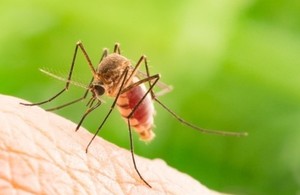Dengue fever Early Warning System (DEWS)
Forecasting and providing early warning of Dengue fever outbreaks in Vietnam through Earth Observation

Mosquito
Project lead
HR Wallingford
Target country(s)
Vietnam
Project consortium
London School of Hygiene and Tropical Medicine, UK Met Office, Oxford Policy Management
International Partners
United Nations Development Programme (UNDP), World Health Organisation (WHO), The National Institute of Hygiene Epidemiology (NIHE), Pasteur Institute Ho Chi Minh City (PIHCMC), Institute of Meteorology, Hydrology and the Environment and Climate Change (IMHEN).
Project Summary
Dengue fever is the most rapidly spreading, mosquito borne, viral disease in the world. Dengue flourishes in urban poor areas, suburbs and rural areas but also affects more affluent neighbourhoods in tropical and subtropical countries. Since 2000, there has been an increase of over 100% in the number of cases of dengue fever in Vietnam alone.
Dengue fever occurs in 141 countries, including Vietnam, where there is currently no system to forecast the probability of future dengue outbreaks. This project will provide a tool giving advance warning, of several months, of likely dengue outbreaks. This will greatly assist public health authorities to mobilise resources to those most in need. The same methods could also be used to forecast outbreaks of Zika, which has recently begun to be reported in Vietnam.
This is the first time a dengue prediction tool will have been designed that links Earth Observation products and hydro-meteorological variables to vector-borne disease incidence at a local scale. The Earth Observation based forecasting system will allow decision makers to identify areas of high risk for disease epidemics before an outbreak occurs, in order to target resources to reduce epidemic spreading and increase disease control. The project will also provide projections of dengue fever under a range of climate change scenarios.
As the dengue forecasting tool will also include a water assessment module, the work will also help to improve water management in Vietnam’s transboundary river basins where there is a lack of hydro-meteorological information.
Objectives
- The production of timely forecasts of dengue epidemics with at least a three-month lead time distributed to all national dengue response authorities.
- 50 government actors reporting improved understanding of the drivers of dengue epidemics.
- At least 30% of community members reporting improved understanding of the drifers of dengue epidemics.
- Advice on the likelihood and prevention of dengue epidemics provided by at least 50 community health workers and;
- At least 50 sector specialists in Vietnam regularly accessing the knowledge products produced.